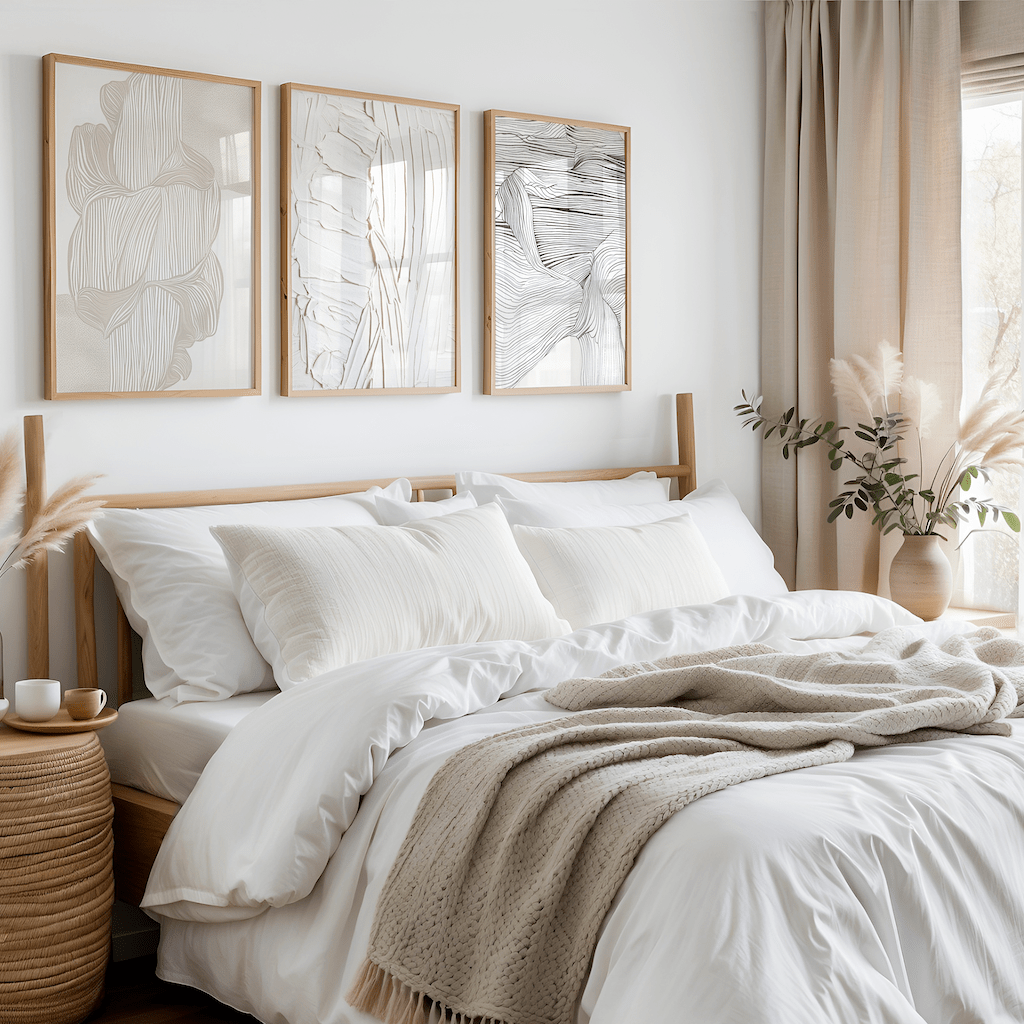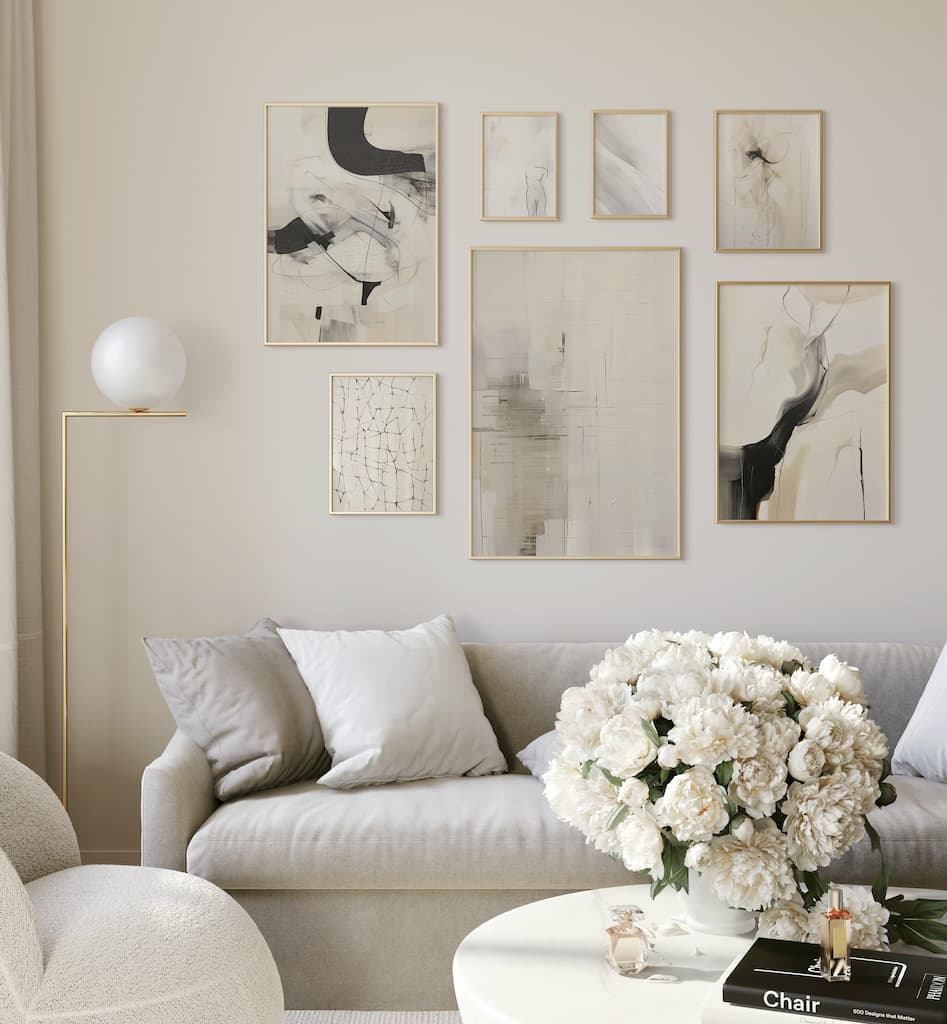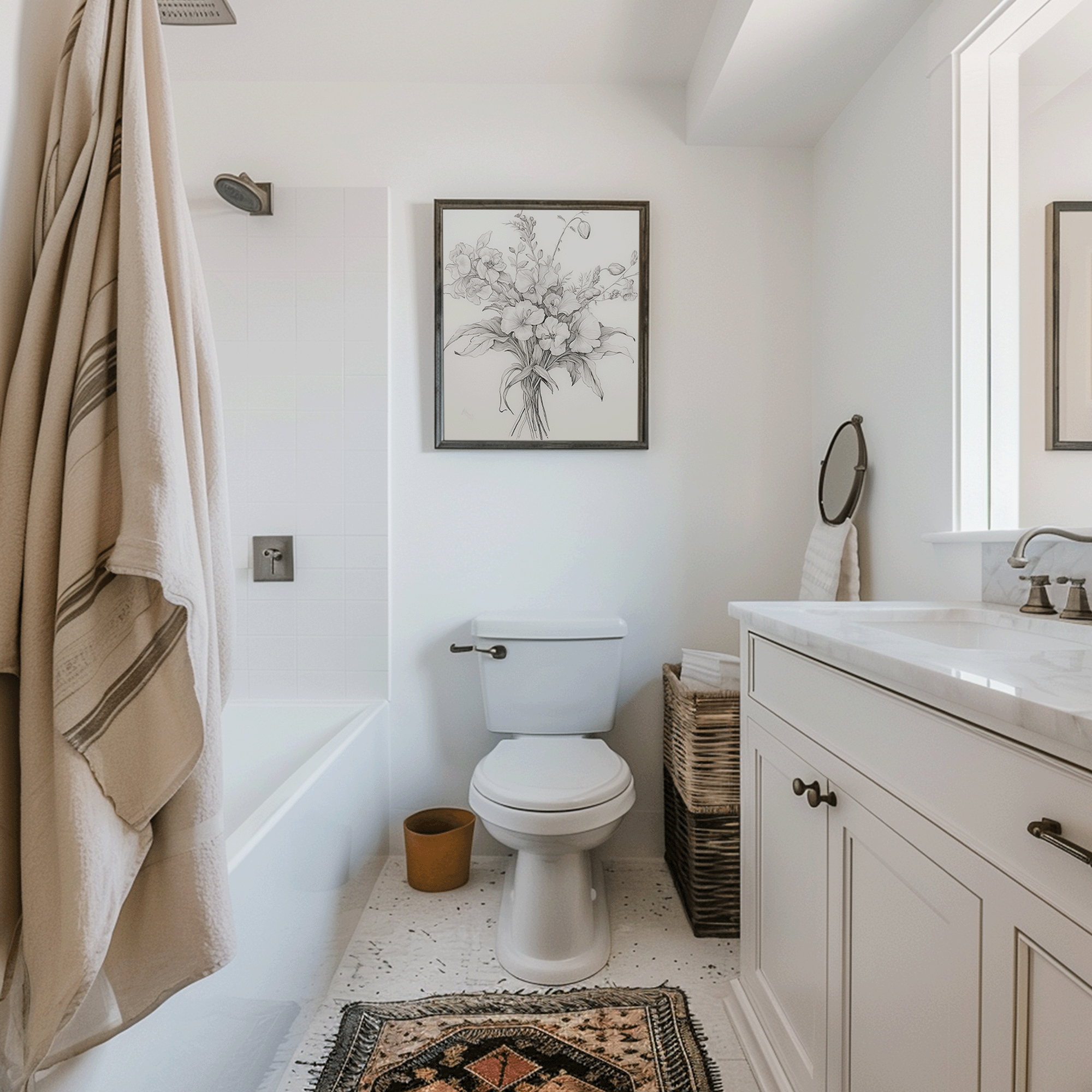Choosing the right wall art is one of the easiest and most impactful ways to elevate a room. Wall art is often the first thing people notice when entering a space, making it crucial in setting the tone and creating a cohesive environment. But many people consider whether the piece of art has to match the furniture or not.
In this article, we’ll explore everything you need to know about mixing, matching, and styling your space with wall art that reflects your personality and makes your home feel complete.

Key Takeaways
- Wall art doesn’t have to match your furniture to look great. Whether you prefer a perfectly coordinated look or love mixing bold art with neutral furniture, both styles work, as long as they reflect your personality and space.
- Matching wall art and furniture can create a cohesive, calming vibe. If you’re drawn to clean, unified interiors, try choosing canvas or framed wall art in tones that echo your sofa, rugs, or pillows.
- Contrast creates visual interest and character. Bold, colorful wall art can instantly elevate a neutral space and become the focal point of your room, even if it doesn’t “match.”
- The best wall art is personal. From abstract canvas prints to fine art paper designs, choose artwork that means something to you. Your walls should tell your story, not just follow trends.
- There are no hard and fast rules. Trust your instincts and decorate in a way that feels right for you—mix, match, or coordinate as you like.
Does Art in a Room Have to Match?
The quick answer: nope. But let’s unpack that.
If you love a room where everything flows—the art, the sofa, the pillows—go for it. That matched-up look feels clean and calm. According to a 2024 Interior Design Masters survey, 68% of people like coordinated wall art for that reason.
But the other 32%? They’re all about mixing it up. Art that stands out, clashes a bit, or becomes the thing everyone notices on the wall? That’s the magic for them. Strategic placement of wall art can create a sense of harmony or connection in the room, guiding the eye and making the space feel thoughtfully curated.
The truth is, your space doesn’t need to look like a catalogue. If a piece of art makes you feel something, that’s what matters. Pinterest and Instagram are packed with inspiration and ideas showing both styles, so pick what speaks to you.
Does Wall Art Have to Match the Furniture in Your Space?
Not at all. Matching is just one option.
If you like a room that feels pulled together, echoing tones across your furniture and art is a solid strategy. A study from the American Institute of Interior Design showed 45% of people prefer that cohesive look.
But 55% say forget that—give us contrast! A neutral sofa with a bright, oversized print? That’s a win, too.
 If you’re unsure, try this: pull one or two colors from your furniture or rug and either match them or pick a fun contrast. Choosing art that complements your existing color palette can help create a sense of cohesiveness, as it ties together different elements in the room and enhances visual harmony. It keeps your space feeling intentional without being too rigid.
If you’re unsure, try this: pull one or two colors from your furniture or rug and either match them or pick a fun contrast. Choosing art that complements your existing color palette can help create a sense of cohesiveness, as it ties together different elements in the room and enhances visual harmony. It keeps your space feeling intentional without being too rigid.
How Do You Match Wall Art in a Living Room?
Your living room sets the tone for your home. Here’s how to bring in art that feels right:
The way you display your art can greatly influence the atmosphere of your living room. Consider creating a gallery wall to showcase a variety of pieces, mixing different art styles and frame choices for a cohesive and visually interesting display.
Color check
When choosing art, consider how the colors in the artwork will work with your existing color scheme. Pick art with similar shades to your couch, pillows, or rug. Even one shared tone can tie it all together.

Building an art collection with a consistent color palette can help create a cohesive and harmonious look throughout the room.
Match your style
Modern space? Go with abstract or minimal pieces, or consider adding a contemporary piece to enhance the modern look. Love boho vibes? Look for earthy, layered prints or botanicals. Choosing works from a favorite artist can also help reinforce your chosen style and create a cohesive atmosphere.
Size matters
When choosing wall art, consider the scale of your artwork in relation to your furniture. Big sofa? Go big with your wall art—a large piece can serve as a striking focal point. Smaller pieces work too—just group them together to make impact.

Use contrast to pop
Neutral room? Add bold art to create an interesting visual effect. Busy space? Keep the artwork simple to avoid overload. Incorporating unique art can add character and make your space stand out.
Pick what feels right
Seriously. If you love it, it belongs on your wall, even if it doesn’t technically match. When you trust your instincts and decorate with confidence, you’re doing an amazing job of creating a space that truly reflects your personality.
We hope these tips help you design a wall art arrangement you love.

What Colors to Use for Wall Art?
Here’s a quick guide to picking the right colors for your space:
- Neutrals like beige, gray, or soft white go with everything.
- Complementary colors (blue + orange, pink + green) = instant harmony.
- Contrast add interest. A splash of red or yellow can wake up a calm space.
- Monochrome palettes (shades of the same color) feel super polished.
- Bold colors can make a statement and set the mood.
Wall art colors can also complement other elements in the room, such as rugs, curtains, or accessories, helping to create a cohesive look. Lighting matters too—colors change in natural vs. warm light, so try it out before committing.
Need help picking? Check out our best-selling wall art for beautiful, timeless designs.
Adding a Personal Touch
At the end of the day, matching is great, but meaning is better.
That abstract canvas that brings you a sense of calms? Or the framed print that reminds you of your favorite vacation? That’s what makes your space truly yours. Buying art that resonates with you is an important part of making your space personal, as each piece you choose adds to your unique story.
At Buy Wall Art, we design prints that work with all kinds of styles, moods, and spaces. Integrating your personal art choices is a key step in the design process for creating a cohesive and inviting home. You can get them on fine art paper, framed, on canvas, or framed canvas. Everything’s made to order and ships free across Canada and the U.S.

Whether you want matchy-matchy or total contrast, we’ve got something for you.
Frequently Asked Questions
What kind of wall art looks best with a neutral couch?
Bold, colorful wall art works great with neutral furniture. It adds contrast and personality without clashing. Try a large painting, such as an abstract painting, or a canvas print or framed artwork with vibrant colors to bring life to your space.

Should canvas art match the color of my furniture?
It doesn’t have to. Matching can create a cohesive look, but contrasting colors add interest. Look for canvas art that complements your furniture tones or brings in new hues for a pop of style. Choosing to match frames can also help tie the art and furniture together, even if the artwork itself doesn't directly match the furniture.
Additionally, consider how you hang your art. Proper placement and height can influence how well the art works with your furniture and the overall balance of the room.

What’s the best way to pick colors for wall art?
Start with colors already in your space (on your rug, pillows, or decor). Choose wall art that either blends with those tones or contrasts them for balance and impact.
Tip: Take photos of different wall art options in your space. Comparing these photos can help you decide which color combinations work best and make it easier to choose the right look for your room.
Can I mix different styles of wall art in the same room?
Yes! Mixing styles, like abstract prints with photography, can make your space feel more dynamic. To tie it all together, consider thoughtful display techniques, such as creating gallery walls. A gallery wall is a great way to display mixed styles of wall art while maintaining visual balance. Just keep some consistency in color or framing to unify the overall display.

Wrapping It Up: Does Wall Art Have to Match Furniture?
When it comes to choosing wall art, there are no fast rules—only flexible guidelines. Matching your artwork to your furnishings, and even coordinating with sculptures, can create a polished, cohesive feel, but contrast and personality matter just as much.
Remember to consider the height from the floor when placing wall art for optimal effect, and use negative space and white space around your pieces to create visual balance and help each artwork stand out. For example, arranging two pieces of art on a large wall can add interest and harmony to the room. The best interiors reflect who you are, not just what goes together.
Art has the power to finish a space, spark emotion, and express your style. Whether you lean toward perfectly coordinated tones or bold statement pieces, the most important thing is that it works for you.
Ready to refresh your walls and bring your style to life? Find wall art that fits your vibe. Start with our best-selling collection and turn your walls into something amazing.


















































